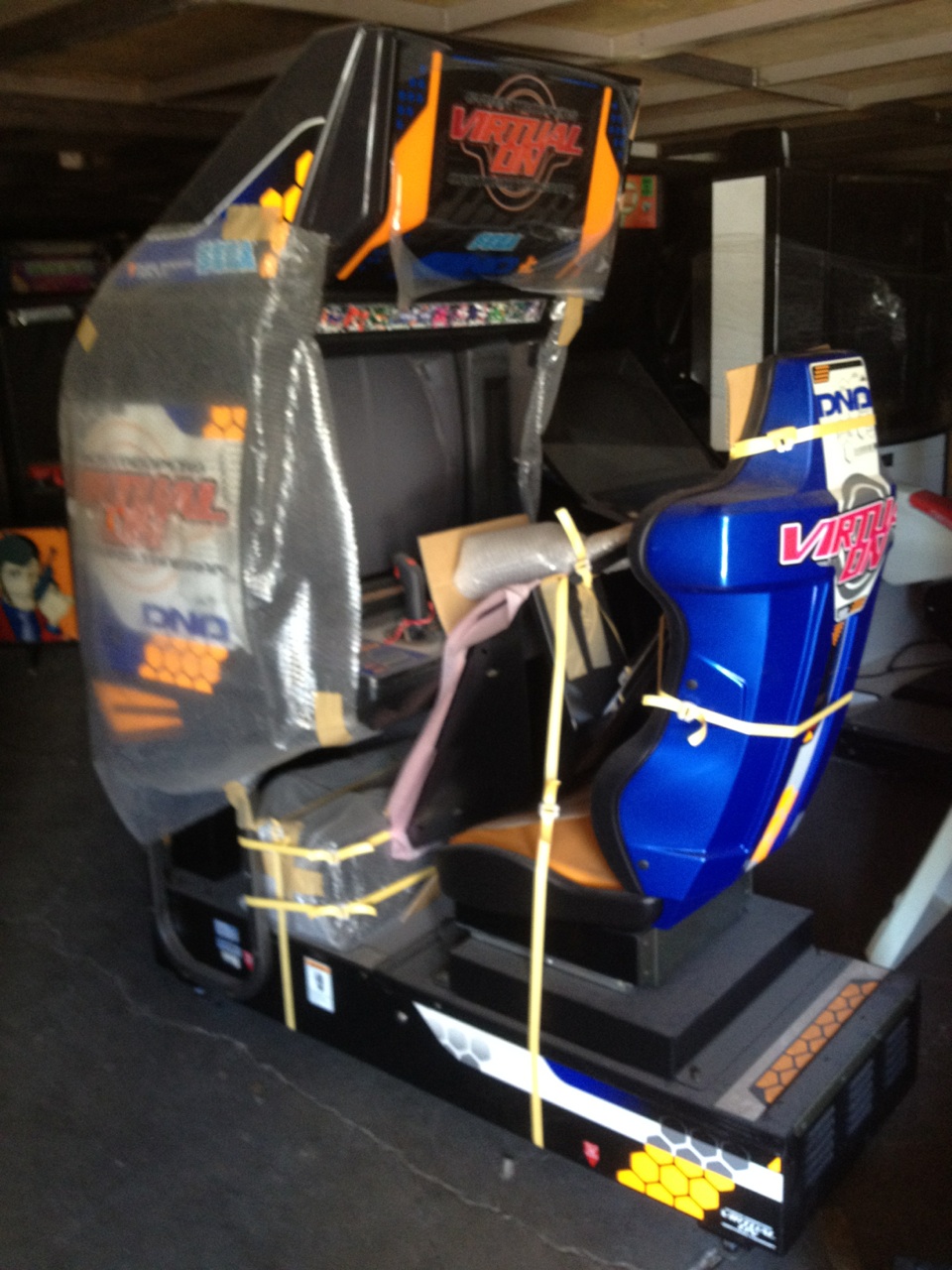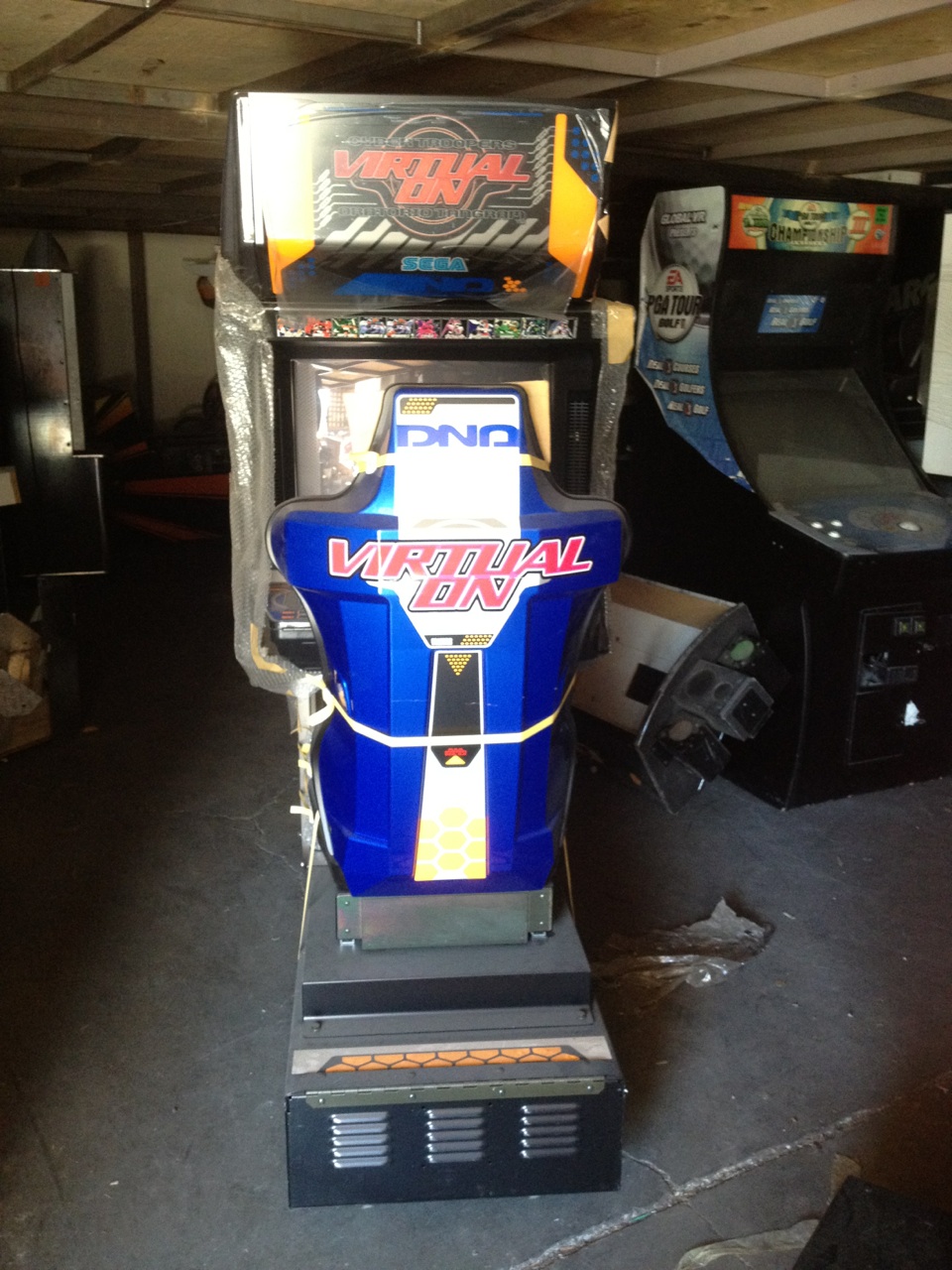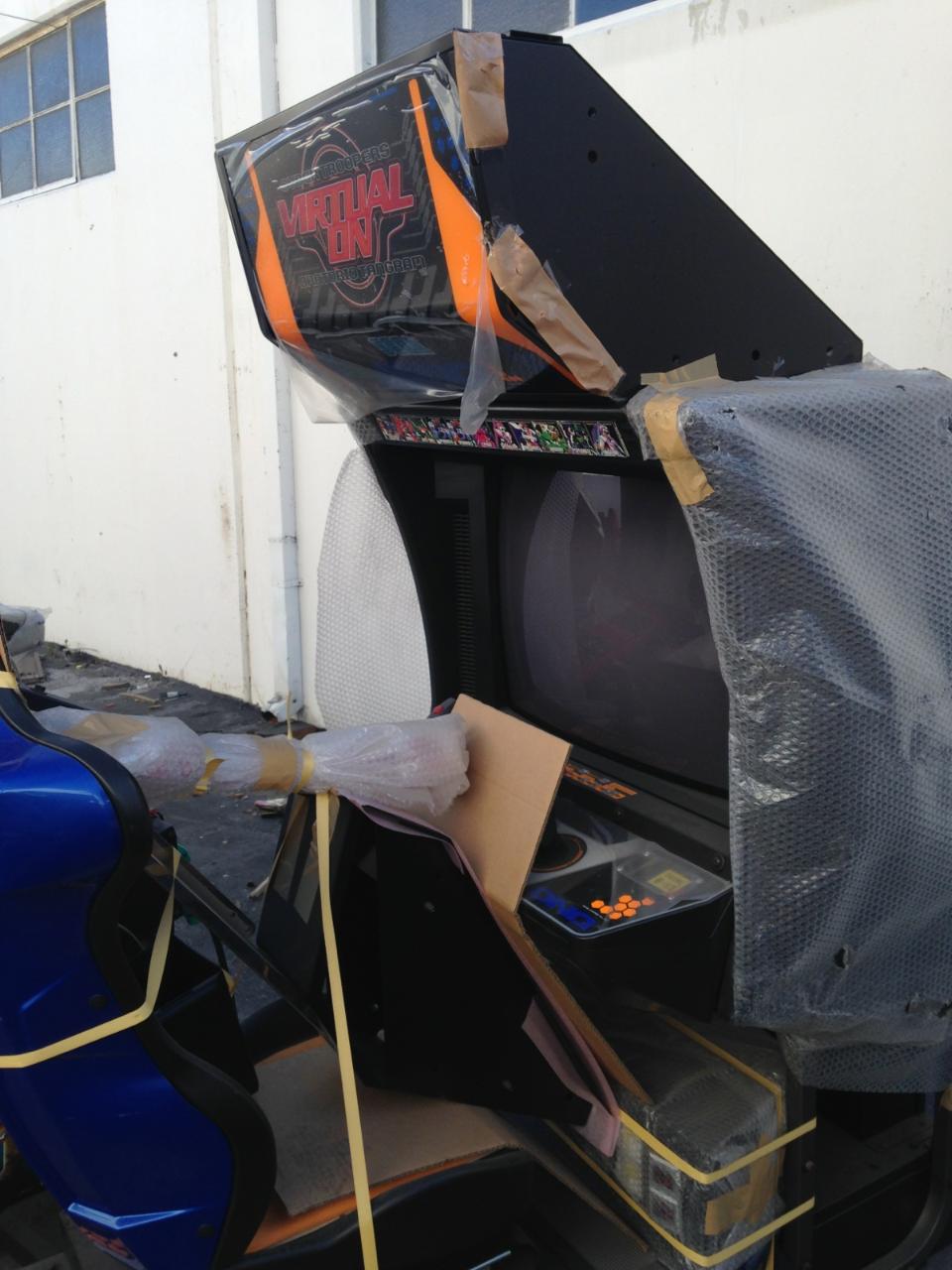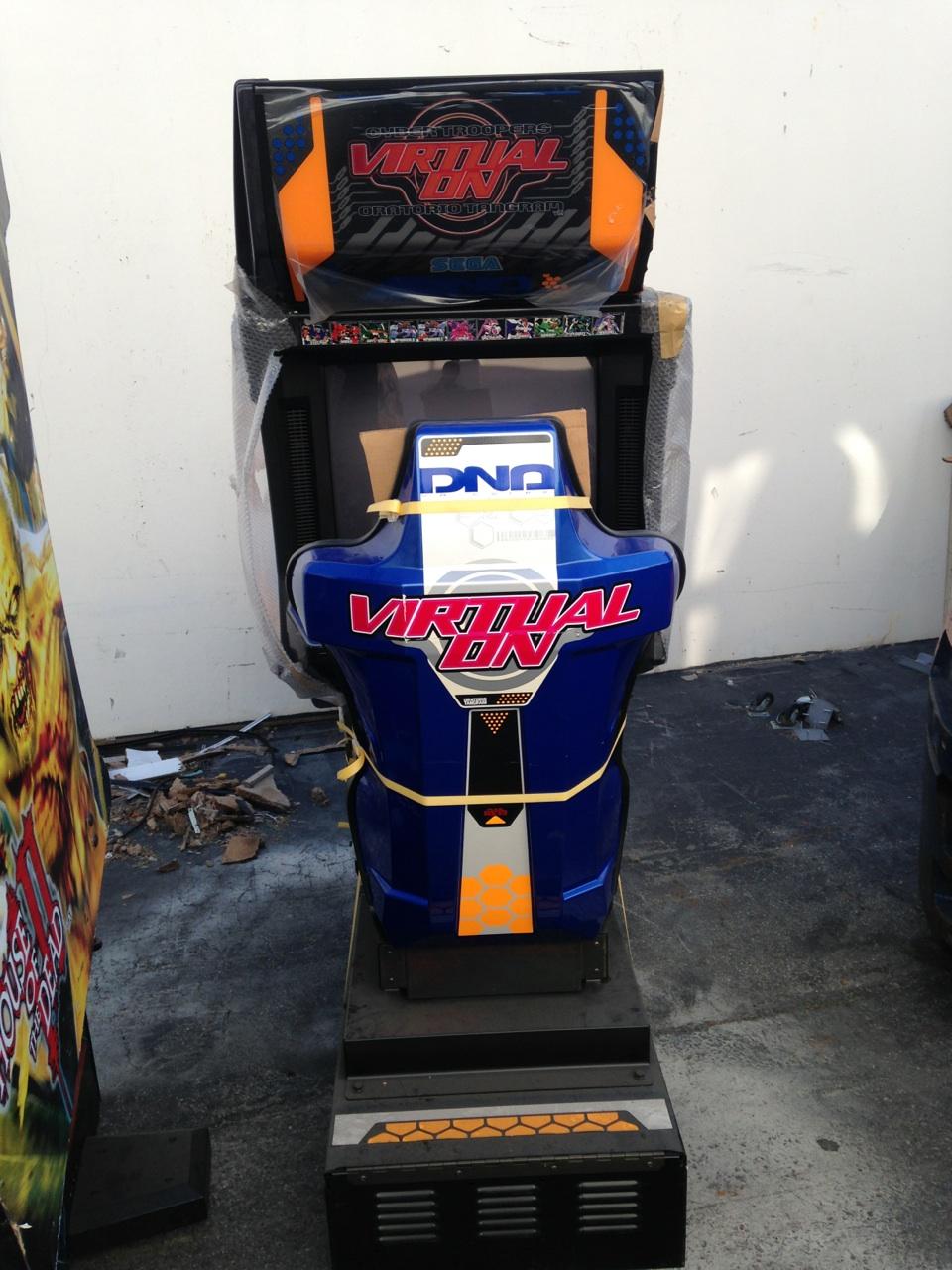actual specs (from system16)
Model 3 Step 2.0:
Main CPU : 32bits RISC PowerPC 603ev 166Mhz
Graphics Chip : 2 x Lockheed Martin Real3D/PRO-1000
Sound CPU : 16bits 68EC000 11.3Mhz
Sound chip : Yamaha SCSP/YMF-292F/"LAKE" FH1 128-step DSP x 2, MIDI interface, 16 bits 64 voices 4 channel, maximum of 16.5 Mbytes ROM, 64 PCM channels
Audio RAM : 1meg (8 megabits, 512K per SCSP chip)
Main Memory : 8 Mbytes 66mhz Ram, graphic ROM maximum of 64 Mbytes, backup RAM 64 Kbytes
Video resolution : 24KHz 496(H)x384(V) one or two plane 24khz, It uses the VGA pinout however. And, the voltage levels of the video output is at VGA levels (.7vdc Peak to Peak)
Scroll Window : two plane (24KHz/two plane mode), 16 colours/32,768 1024 palette x 2 bank, 256/32,768 64 palette x 2 bank
Geometrizer : At least 1,000,100 polygons/s for square polys, 2,000,200 for Triangle polys
Renderer : At least 60,000,000 pixels/s
Video : Full Color Texture Mapping, Tri-Linear Interpolation, Micro Texture, Shading High-Specula Gouraud Shading , Fix Shading, Flat Shading, Texture & Edge Multi Layered Anti-Allasing, Lighting Effects, Parallel Light, 4 Spot Light, Pin Spot Light, Special Effect Zoning-Fog, 32 Levels of Translucency.
Board composition : CPU + VIDEO + ROM boards
Others : 10mbs Connection, calendar IC
NAOMI:
The NAOMI (New Arcade Operation Machine Idea) is also Japanese for beauty above all else.
CPU : Hitachi SH-4 32-bit RISC CPU (200 MHz 360 MIPS / 1.4 GFLOPS)
Graphic Engine : PowerVR 2 (PVR2DC)
Sound Engine : ARM7 Yamaha AICA 45 MHZ (with internal 32-bit RISC CPU, 64 channel ADPCM)
Main Ram : 32 megs
Main Memory : 32 MByte
Graphic Memory : 16 MByte
Sound Memory : 8 MByte
Media : ROM Board (maximum size of 172MBytes) / GD-Rom
Simultaneous Number of Colors : Approx. 16,770,000 (24bits)
Polygons : 2.5 Million polys/sec
Rendering Speed : 500 M pixel/sec
Additional Features : Bump Mapping, Fog, Alpha-Bending (transparency), Mip Mapping (polygon-texture auto switch), Tri-Linear Filtering, Anti-Aliasing, Environment Mapping, and Specular Effect.
And just because here is Hikaru (VO Force):
CPU : 2 x Hitachi SH-4 128 bit RISC CPU with graphic functions @ 200 MHz 360 MIPS / 1.4 GFLOPS
Graphic Engine : Sega Custom 3D
Sound Engine : 2x ARM7 Yamaha AICA @ 45 MHz with internal 32-bit RISC CPU, 64 channel ADPCM
Main Memory : 64 Mbytes
Graphic Memory : 28 Mbytes
Sound Memory : 8 Mbytes
Media : ROM Board (max 352 MBytes)
Simultaneous Number of Colors : Approx. 16,770,000 (24bits)
Resolution : 24 KHz, 496x384, 31 KHz 640x480
Polygons : 2 Million polys a sec
Shading : Phong Shading
Lighting : Horizontal, Spot, 1024 lights per scene, 4 lights per polygon, 8 window surfaces.
Effects : (at least) Phong Shading, Fog, Depth Queueing, Stencil, Shadow, Motion blur
Others Capabilties : Bitmap Layer x 2, Calender, Dual Monitor (24 kHz)
Extensions : communication, 4 channel audio, PCI, MIDI, RS-232C
Connection : Jamma Video complient
And Model 2B-CRX (OMG):
Main CPU : Intel i960-KB @ 25 MHz 32bits RISC
Co-Processor : 2 Analog Devices SHARC FPU 32bits 16M flops
Co-Processor Abilities : Floating decimal point operation function, Axis rotation operation function, 3D matrix operation function.
Memory RAM : 8 M-Bits + 1 M-bit
Memory ROM : 720 M-bits (max.)
Video resolution : 496x384 24Hz Horizontal sync, wave, non interlace.
Scroll Surfaces : 2 Surfaces, Horizontal line scroll, 16 colours x 123 colour palettes / 32,768 colours
Window Surfaces : 2 Surfaces, Horizontal line scroll, 16 colours x 123 colour palettes / 32,768 colours
3D Graphics Engine : Built in floating decimal point unit.
900,000 vectors/sec (max.) 300,000 polygons/sec (max.)
Polygon Surfaces : 2,000,000 pixels/frame (60 frames/sec)
1,024 colour palettes x 64 luminance tables, 16,777,216 colours.
Texturing Information : Perspective Texture, 16 shade mono texture
Map size : 1024x2048x2 (sheets)
Micro Texture : 128x128x8 Sheets
Translator Map : 128 shades x 256 sets
Transparent 1 shade, checker board, texture antialiasing.
Notes : Advanced communications function, can link many machine together.
The step from Model 2 to Model 3 is enormous.... Model 3 to NAOMI is a slight upgrade across the board.
Hikaru blows away NOAMI in some aspects and is a slight downgrade in others... it's really an oddball piece of hardware. I believe it was actually developed BEFORE the NAOMI but was abandoned quickly because of the cost. I could be wrong.




